
Telepresence is the appearance or sensation of a person being present at a place other than their true location, via telerobotics or video.

Electronic art is a form of art that makes use of electronic media. More broadly, it refers to technology and/or electronic media. It is related to information art, new media art, video art, digital art, interactive art, internet art, and electronic music. It is considered an outgrowth of conceptual art and systems art.
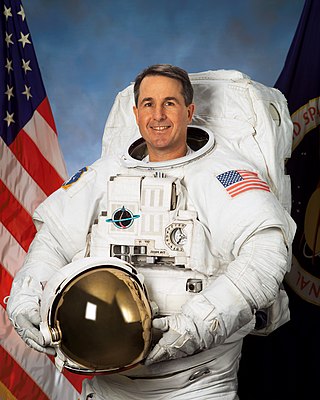
Stephen Kern "Steve" Robinson is an American former NASA astronaut.
The Prix Ars Electronica is one of the best known and longest running yearly prizes in the field of electronic and interactive art, computer animation, digital culture and music. It has been awarded since 1987 by Ars Electronica.
Knowbotic Research is a German-Swiss electronic art group, established in 1991. Its members are Yvonne Wilhelm, Christian Hübler and Alexander Tuchacek. They hold a professorship for Art and Media at the University of the Arts in Zürich.

Karl Sims is a computer graphics artist and researcher, who is best known for using particle systems and artificial life in computer animation.

Kenneth Yigael Goldberg is an American artist, writer, inventor, and researcher in the field of robotics and automation. He is professor and chair of the industrial engineering and operations research department at the University of California, Berkeley, and holds the William S. Floyd Jr. Distinguished Chair in Engineering at Berkeley, with joint appointments in Electrical Engineering and Computer Sciences (EECS), Art Practice, and the School of Information. Goldberg also holds an appointment in the Department of Radiation Oncology at the University of California, San Francisco.

Stelarc is a Cyprus-born Australian performance artist raised in the Melbourne suburb of Sunshine, whose works focus heavily on extending the capabilities of the human body. As such, most of his pieces are centred on his concept that "the human body is obsolete". Until 2007 he held the position of principal research fellow in the Performance Arts Digital Research Unit at Nottingham Trent University in Nottingham, England. He is currently furthering his research at Curtin University in Western Australia.
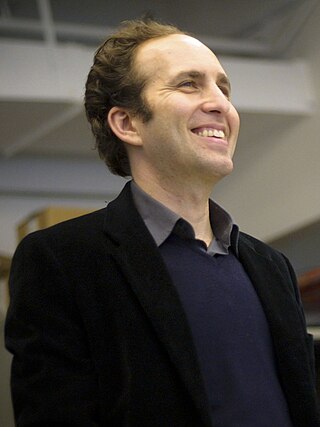
Scott Snibbe is an interactive media artist, author, entrepreneur, and meditation instructor who hosts the Skeptic's Path to Enlightenment meditation podcast. His first book, How to Train a Happy Mind, was released in 2024. Snibbe has collaborated with other artists and musicians, including Björk on her interactive “app album” Björk: Biophilia that was acquired by New York's MoMA as the first downloadable app in the museum's collection. Between 2000 and 2013 he founded several companies, including Eyegroove, which was acquired by Facebook in 2016. Early in his career, Snibbe was one of the developers of After Effects.

Maurice Benayoun is a French new-media artist, curator, and theorist based in Paris and Hong Kong.

Virtual art is a term for the virtualization of art, made with the technical media developed at the end of the 1980s. These include human-machine interfaces such as visualization casks, stereoscopic spectacles and screens, digital painting and sculpture, generators of three-dimensional sound, data gloves, data clothes, position sensors, tactile and power feed-back systems, etc. As virtual art covers such a wide array of mediums it is a catch-all term for specific focuses within it. Much contemporary art has become, in Frank Popper's terms, virtualized.
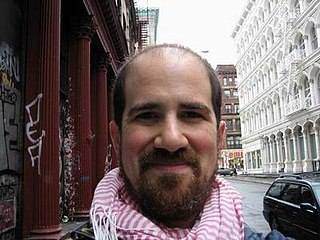
Zachary Lieberman is an American new media artist, designer, computer programmer, and educator.
Can You See Me Now? (CYSMN?) is an urban chase game developed by Blast Theory and The Mixed Reality Lab in 2001. CYSMN? is a pervasive game, where performers on the streets of a city use handheld computers, GPS and walkie talkies to chase online players who move their avatars through a virtual model of the same town. CYSMN? was built in the Equator project on the EQUIP architecture.
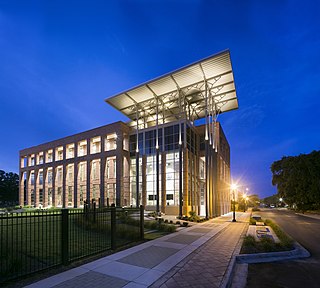
The Florida Institute for Human & Machine Cognition (IHMC) is a not-for-profit research institute of the State University System of Florida, with locations in Pensacola and Ocala, Florida. IHMC scientists and engineers investigate a broad range of topics related to building systems aimed at amplifying and extending human cognitive, physical and perceptual capacities.
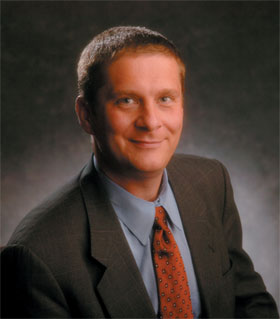
Timothy J. Broderick, F.A.C.S., is Professor of Surgery and Biomedical Engineering at the University of Cincinnati, where he has been on the faculty since 2003. He also is Chief of the Division of Gastrointestinal and Endocrine Surgery and is Director of the Advanced Center for Telemedicine and Surgical Innovation (ACTSI). He has flown on the NASA KC-135 parabolic laboratory and dived in the NASA Extreme Environment Mission Operations (NEEMO) program to develop advanced surgical technologies for long duration space flight.

Ars Electronica Linz GmbH is an Austrian cultural, educational and scientific institute active in the field of new media art, founded in Linz in 1979. It is based at the Ars Electronica Center (AEC), which houses the Museum of the Future, in the city of Linz. Ars Electronica's activities focus on the interlinkages between art, technology and society. It runs an annual festival, and manages a multidisciplinary media arts R&D facility known as the Futurelab. It also confers the Prix Ars Electronica awards.
Memo Akten is an artist and creative technologist based in Los Angeles (USA) as an Assistant Professor of Computational Art at the University of California San Diego (UCSD). He is known for the reappropriation of advanced electronics, software and hardware systems to create multimedia experiences that he describes as an attempt to "change our perceptions on our relationship with science, nature technology and culture".

Franz Fischnaller is a new media artist and transdisciplinary researcher. He is recognized for the creation of his digital, virtual reality and interactive art installations works across the fields of art, technology, humanities and cultural heritage.
Monika Fleischmann is a German research artist, digital media scientist, and curator of new media art working in art, science, and technology. Since the mid-1980s she has been working collaboratively with the architect Wolfgang Strauss. As part of their research in New Media Art, Architecture, Interface Design and Art Theory, they focus on the concept of Mixed Reality, which connects the physical with the virtual world.

Louis Barry Rosenberg is an American engineer, researcher, inventor, and entrepreneur. He researches augmented reality, virtual reality, and artificial intelligence. He was the Cotchett Endowed Professor of Educational Technology at the California Polytechnic State University, San Luis Obispo. He founded the Immersion Corporation and Unanimous A.I., and he wrote the screenplay for the 2009 romantic comedy film, Lab Rats.














